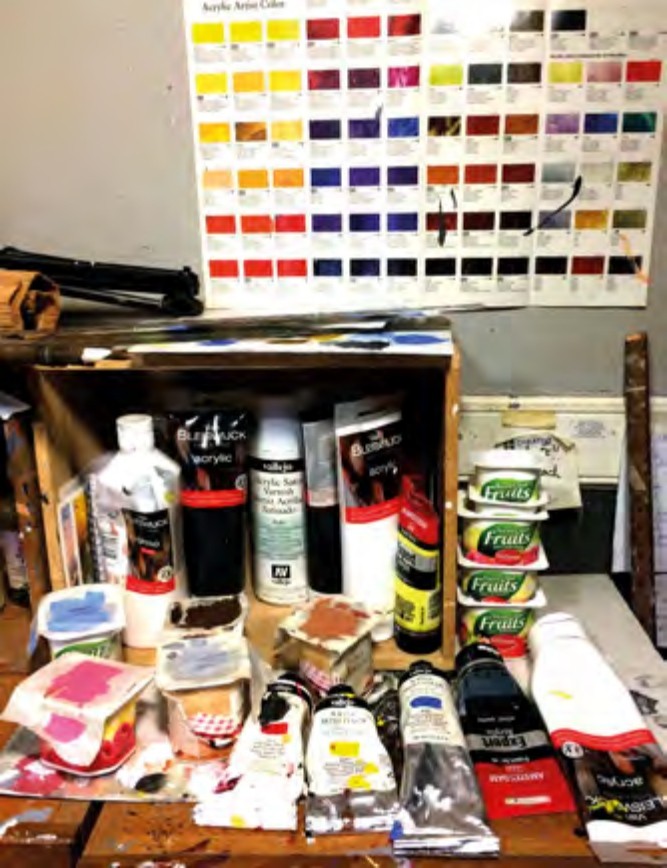
Painting materials in the newly installed wine boxes. I made a point of collecting a number of wine boxes from boot sales and supermarkets and using them as a storage facility in the studio. This picture is typical of the state of things when paintings are in progress (most of the time).
The term ‘poster-like’ paintings most often refers to the posters issued by travel companies in the inter-war period, 1923 to 1940. Although shipping companies, and later airlines, also used large colourful posters to advertise their destinations, it was the railway posters that most captured the public’s imagination. Until 1923, the railways of Britain comprised scores of small companies that ran services all over the country. In 1923, the railways were grouped into four major companies, each covering a specific section of the country but with some overlap to encourage competition. These companies, known as The Big Four, were the London and North Eastern Railway (LNER), the London, Midland and Scottish Railway (LMS), the Great Western Railway (GWR) and the Southern Railway (SR). The competition thus created motivated the companies into improving their advertising and the railway poster as we know it was born.
Initially, graphic and commercial artists were employed to create designs but better-known artists of the period, including many Royal Academicians were soon added. The brief was simple: a large, colourful picture showing the best features of a certain town or region, which could be seen from a distance. These paintings, however, had to conform to the technical and printing limitations in force at the time. This meant no shading, airbrushing or tonal variations. Only flat colours were permissible and a limited number of colours at that. The number of colours used depended on the importance of the poster, the size of the print run and the budget. A poster advertising the coronation in 1937, for example, might warrant up to 12 colours whereas a poster for a small seaside town in an obscure part of the country might only justify four colours. Five to eight colours were the norm for most posters. The process was by simple lithography on stone blocks, which meant each colour had to be applied separately. Each colour, therefore, incurred a cost so the fewer colours used, the less expensive the print run.